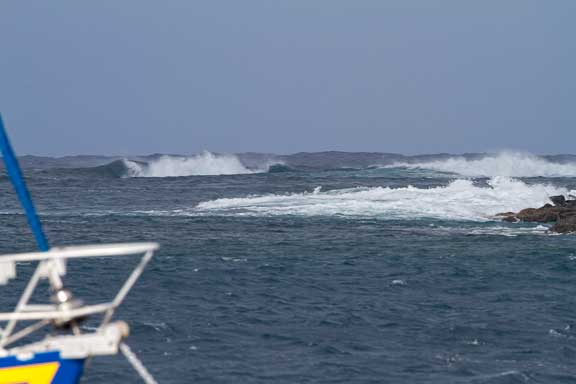
The breeze is up at Playa Francesa courtesy of the Azores high pressure system. Offshore seas look to be running the predicted 12 to 20 feet (four to six meters) from the northeast. With the seas and wind aligned we’re thinking the risk is low of these waves wrapping into the anchorage. We are hanging out for the moment (but have moved to the outer fringe of the anchored yachts so we can depart quickly should the desire arise).
The photo above is looking to the southwest, into the open ocean.
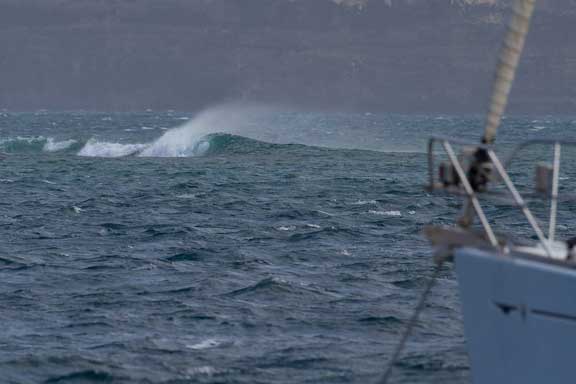
There is a small spit sticking into the channel between Isla Graciosa and Lanzarote, which offers a degree of protection from the north.
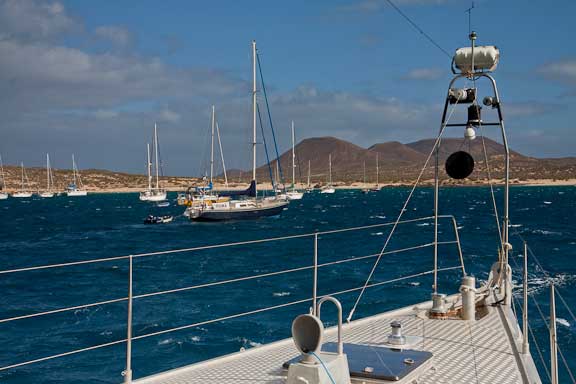
Meanwhile, things are copacetic in the anchorage, if occasionally rolly.
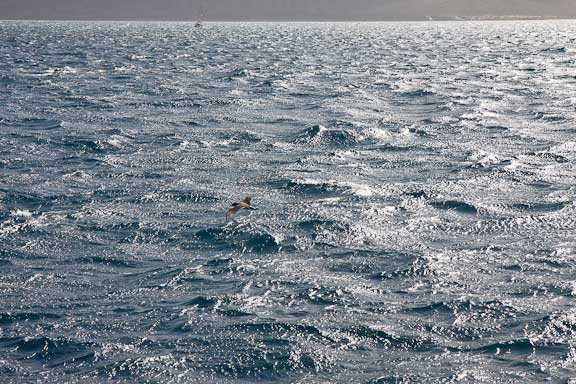
Between the clouds, sunshine and wind, the sea surface presents an interesting and ever varying appearance. We may be boat bound, but there is lots to see and do.
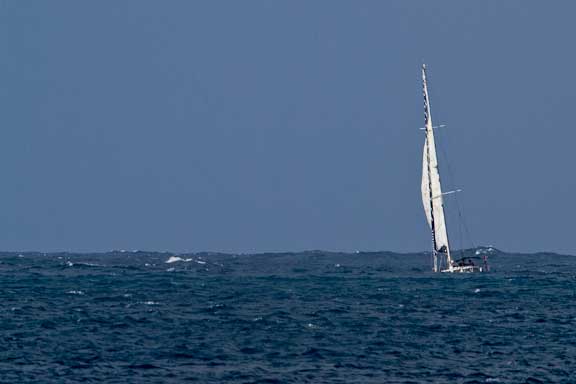
Speaking of which, this English cutter just sailed in. Although in these photos she is in the lee of Isla Graciosa, there is still a bit of sea running, as you can see here.

Same photo, now cropped tight. Check out the waves offshore.
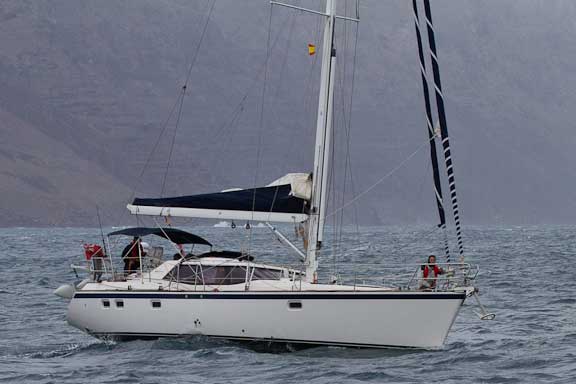
Coming into the anchorage, anchor deployed, ready to drop. Odds are they are arriving from Morocco or maybe Spain. They will have had a lovely downwind ride in these conditions.

Crew is forward, remote control for the windlass in hand. We prefer a windlass control in the cockpit, where it can be operated by the skipper. Note the anchor swivel. You know what we think of those.
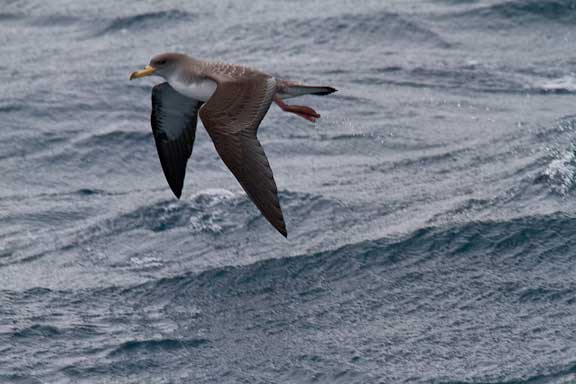
The gulls are working hard at fishing, using us as a downwind turning mark.
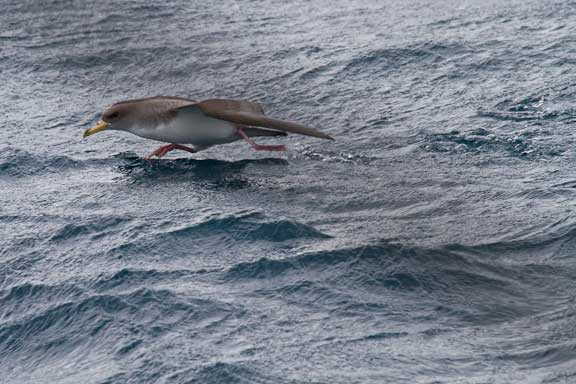
They have a technique for flying to weather we have not seen before. Getting low, where the breeze is lighter, they use their feet to assist in forward propulsion, while their wings provide support in ground effect.
There is a conundrum when choosing where to sit at anchor in this situation. If you tuck in close you will probably have better protection from the waves that wrap into the anchorage. But then you are at risk of bigger wave sets creating a break outside of your position. In a crowded anchorage like Francesa, there is the additional problem of swinging room, not to mention other yachts dragging, and ease of escape, particularly in the dark.
Hence our outside position. We are subject to more wave action, but between our size, flopper stoppers, and inherently soft motion, even though we are moving around a bit it is not unpleasant.
We have also been experimenting with the NAIAD active stabilizers. A few hours ago we lit off one of our engines, turned on the hydraulic system, and set the stabilizers so they would work with zero speed input. The results have been pleasantly surprising. Motion, both amplitude and acceleration, is reduced and there is an increase in comfort. We are checking now with NAIAD about the settings we are using to see if we can improve things even more. We have also asked our John Deere diesel distributor about the affects of running the engine at idle for long periods. We shall report in due course.
Time to get back to work.

November 1st, 2010 at 9:23 am
Steve,
how does the 83 and 64 ride at anchor in respect to sailing around? with the 83 having a keel and the 64 not, do you notice that one or the other is better for not sailing around at anchor? I find that when a boat sails around, it is very unconfortable.
rich
November 1st, 2010 at 3:46 pm
Hi Rich:
The FPBs are like a sloop with a roller furler on the headstay at anchor. They do shear back and forth, but the motion is softer than a sailboat. We have found with Wind Horse that keeping scope short helps, particularly in deep water.
November 1st, 2010 at 1:55 pm
Sounds like you need a small electrically driven hydraulic pump.
November 1st, 2010 at 3:43 pm
It would take a four to six HP pump to do the job Kent. One approach would be a PTO on the genset. But we need this so rarely we are looking for the simplest approach, using one of the small engines.
November 2nd, 2010 at 4:04 am
Are you using the NAIAD active stabilizers with or without the flopper stoppers? How do they compare to the flopper stopper rig in terms of movement?
November 2nd, 2010 at 6:44 am
Hi Dave:
At anchor the flopper stoppers are the primary roll control devices. Using the NAIADs just added a bit more attenuation to the motion. The passive boomed system, with its long lever arm, is always going to be more effective, and does not require power.
November 3rd, 2010 at 3:58 pm
Hi Steve,
your remark to the ancher swivel is probably meant to indicate your reluctance for this piece of equipment. Shown is the so called “Power Ball” wich is a very strong swivel (tested and certified for a higher breaking load than the corresponding chain size) and in my opinion a very clever piece of engineering. It allows the chain to move 360 degrees, thus taking out the additional load when otherwise turned over. I have fitted one myself an can only complement it.
Best regards,
Rainer